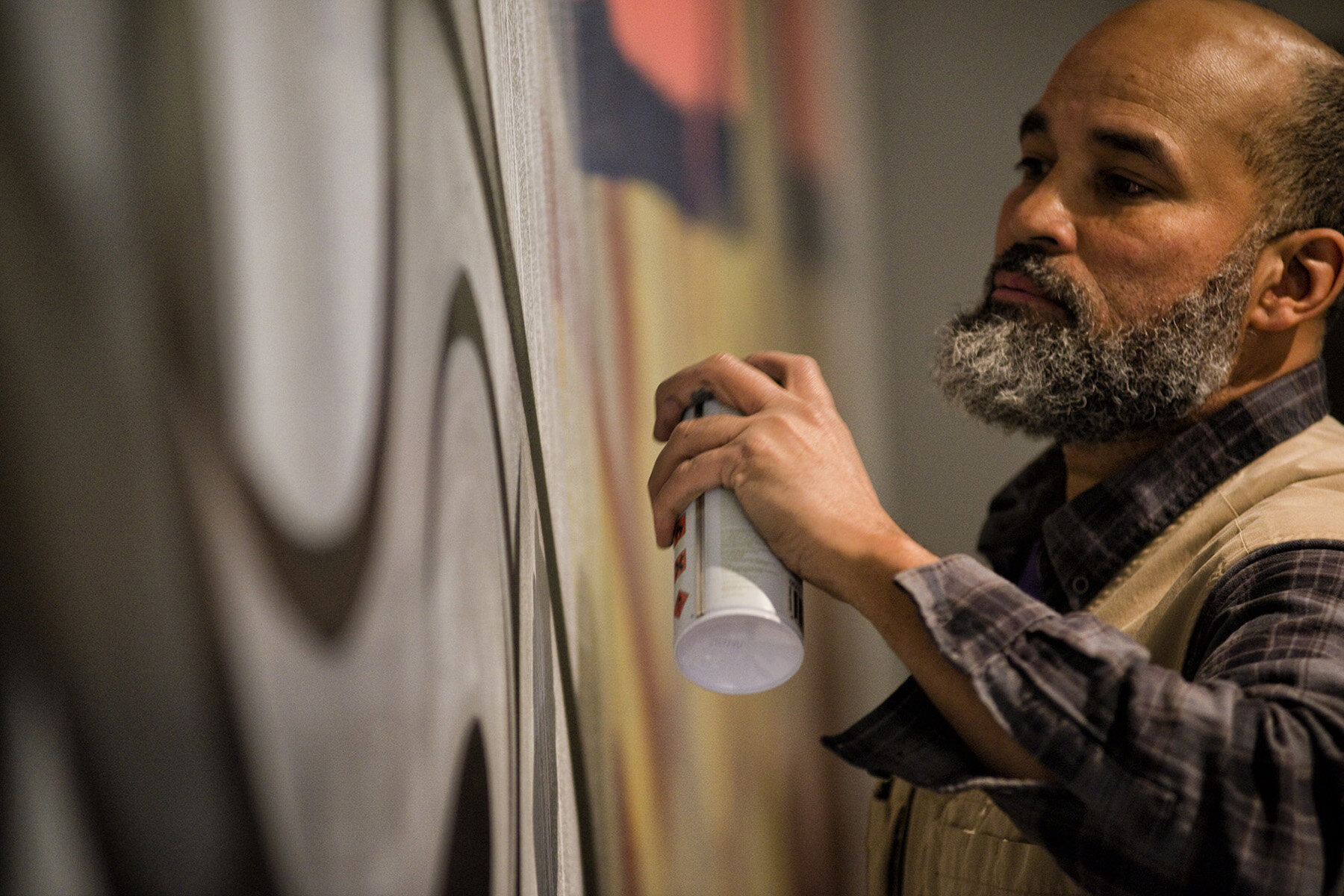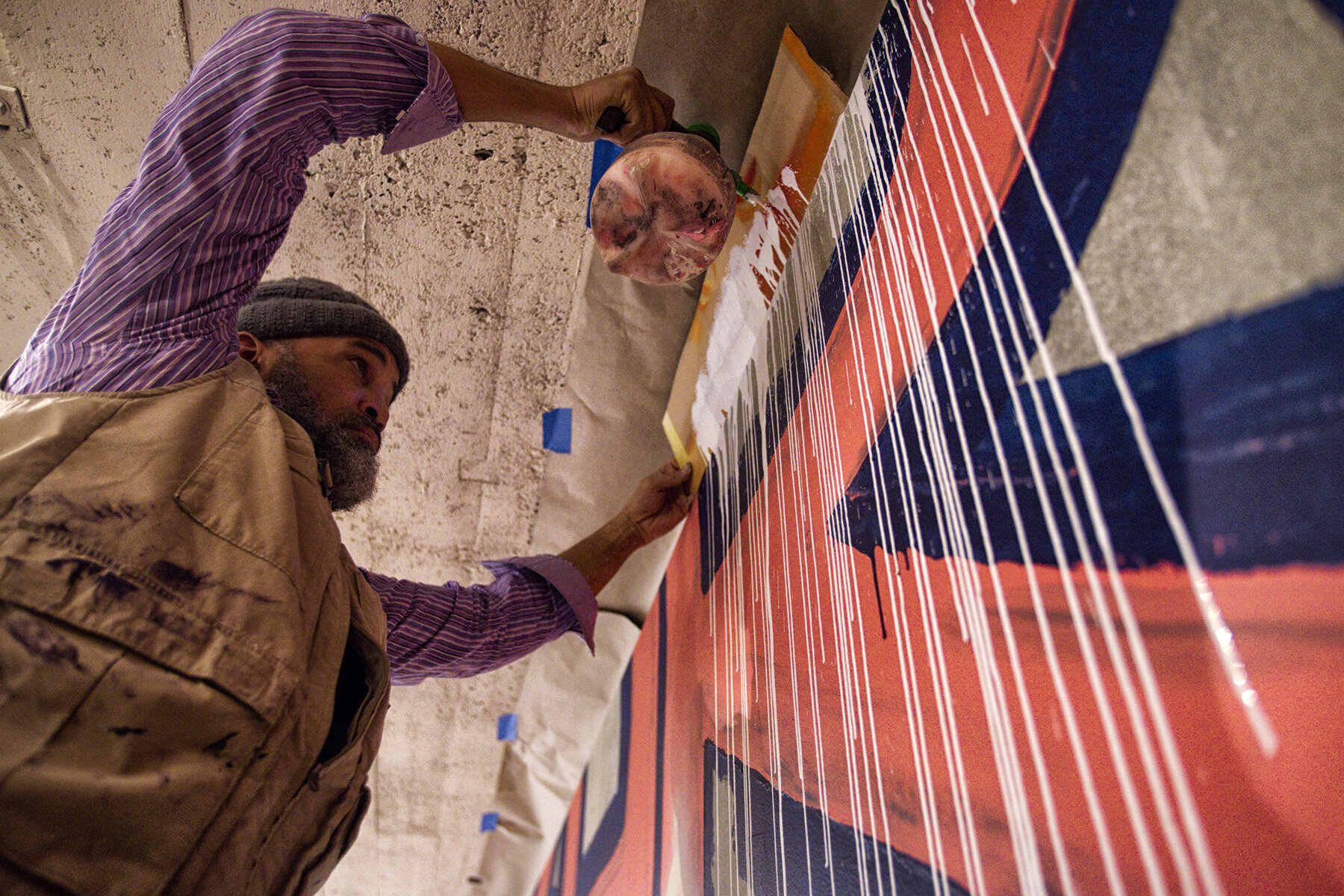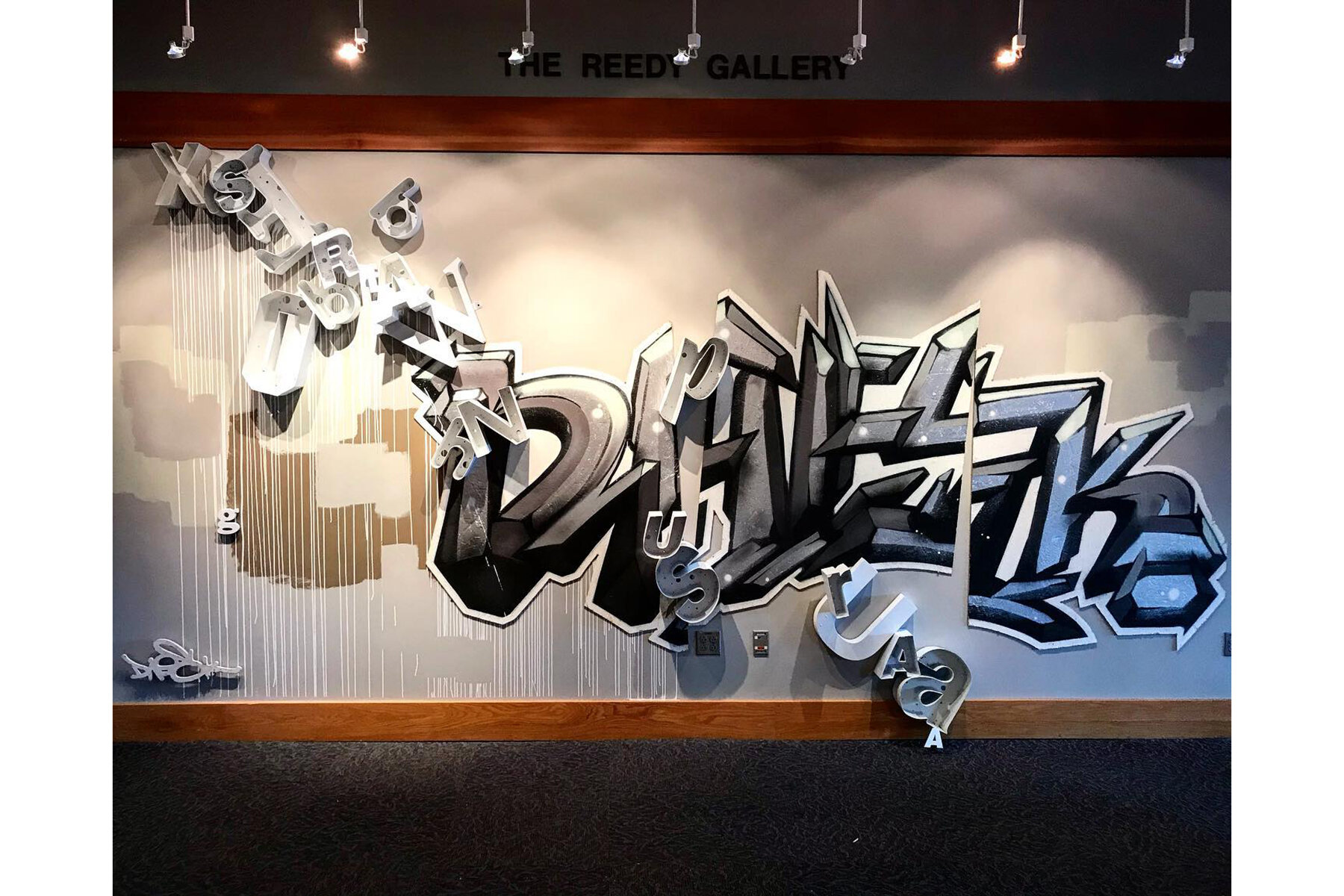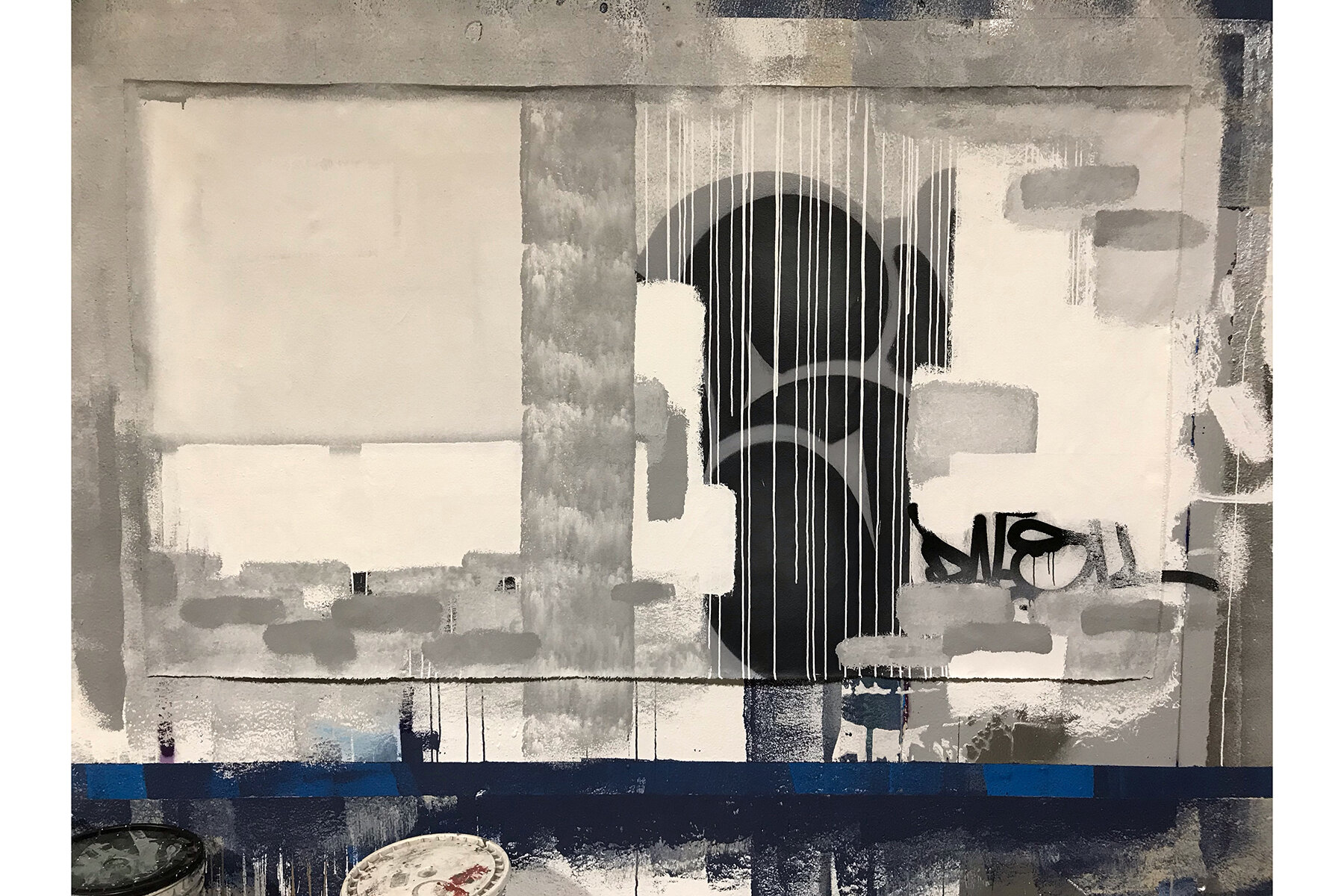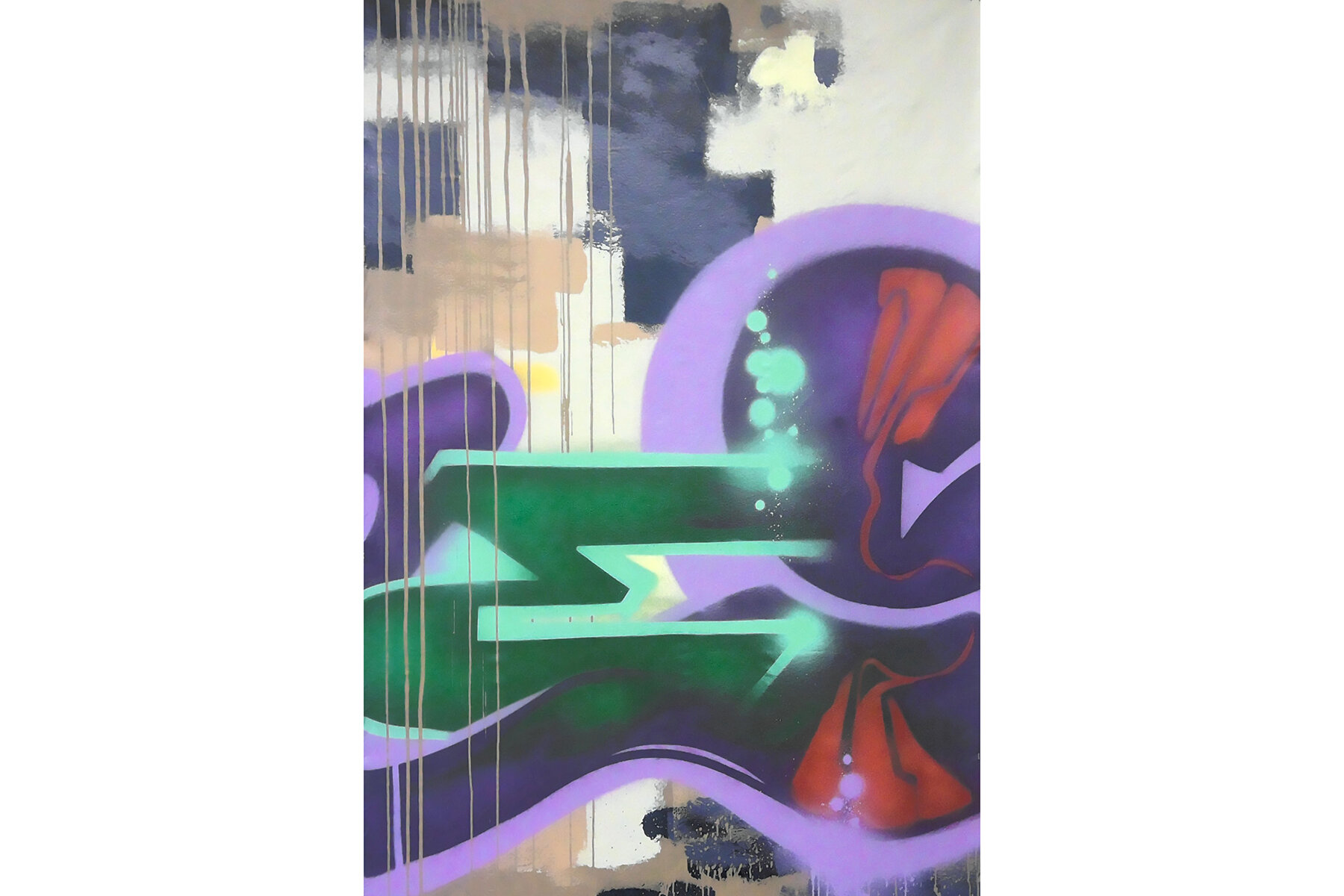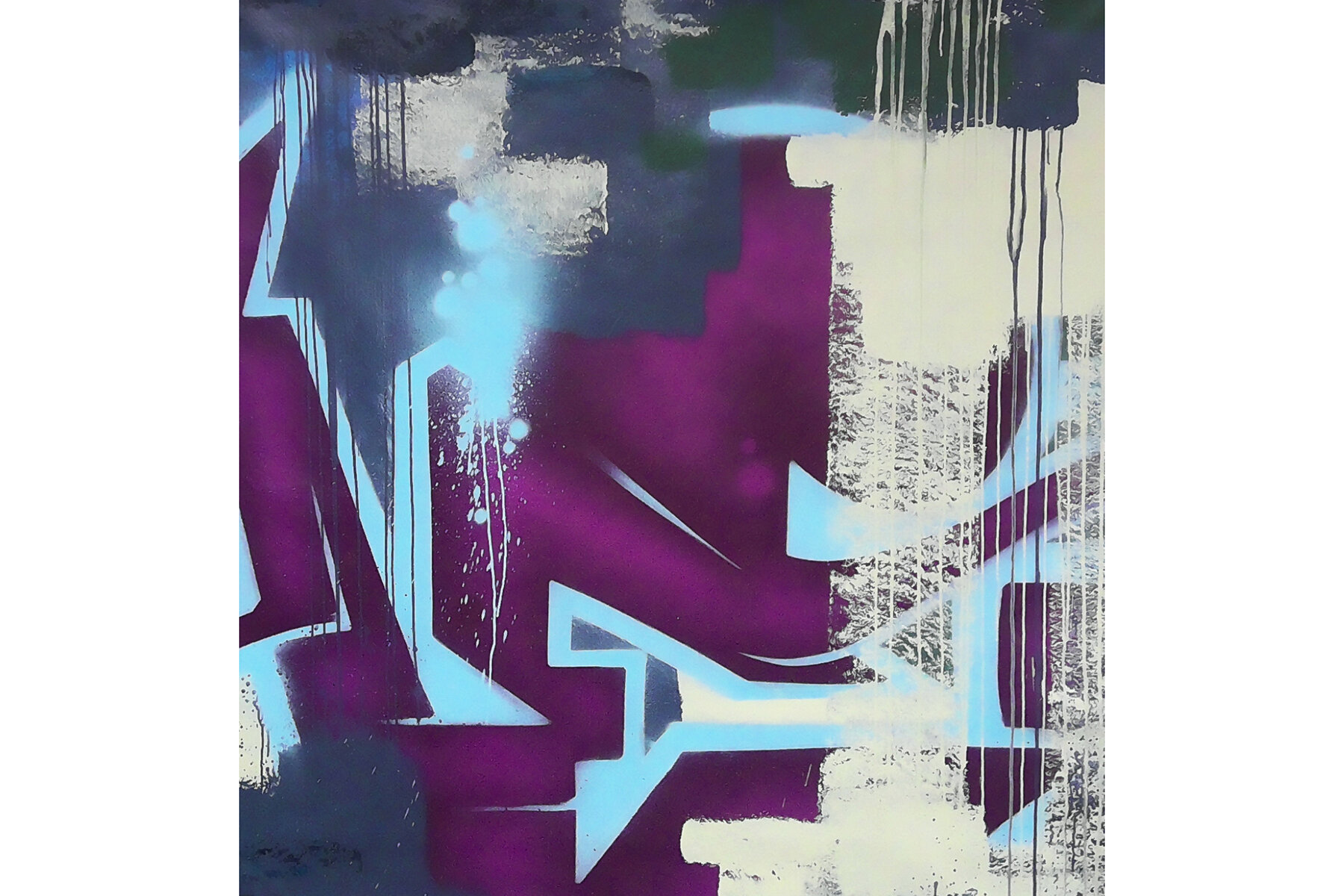Artist Peyton Scott Russell on the Role of Graffiti in the Built Environment
As told to Ann Mayhew | May 27, 2021
Artist Peyton Scott Russell. Photo by Greg Thompson.
FEATURE
Graffiti is on the rise in the Twin Cities (Axios Twin Cities shared the statistics). For many people on whose properties graffiti, especially tagging, appears, this is a concern and frustration. Also growing is the prevalence of sanctioned and unsanctioned graffiti art, including now-iconic murals.
ENTER spoke with Peyton Scott Russell, a Minneapolis-based artist who combines a traditional fine arts education with a lifelong practice of graffiti, to gain his perspective. The audience-favorite speaker at this year’s Lake Superior Design Retreat, Russell has dedicated himself to teaching classes and creating curriculum for children and adults, encouraging acceptance of graffiti art as a serious art form and bridging divides between people with different understandings of and viewpoints on graffiti. In the interview below, Russell also reflects on his own work and current projects, highlighting the need for community expression and public art in the built environment overall.
On Street Art—Its Definitions and Related Cultures
The definition of graffiti itself is markings, scratches, writing, carvings, etc. on a surface. Graffiti art is focused artistic lettering, creative typography, unsanctioned murals, a style of design, and thoughtful writing on a surface combined with artistic elements and design principles. Another element in the graffiti culture is graffiti writing, which is the act of writing or tagging, concentrating only on letters and the development of stylized letters as an expression. There are also definitions like street artist/street art, which is considered to be art made on the street with imagery and messages or themes without the focus on styled writing or the pure intent of letters and names as the main idea of the art.
The artist at work. Photos by Greg Thompson.
Graffiti writers, graffiti artists, and street artists are genres of “street art cultures.” They are independent of each other by approach and intent guided by the artist. The lines can be blurry, but artists in this community understand the differences. I practice graffiti art, painting, murals, sculpture, and screen printing.
On His Mural of George Floyd
I have been working for over three decades to get graffiti art understood as a serious fine art. Seeing its popularity grow in the past 10 years has been phenomenal. With the events related to George Floyd, more people understood how street art can be a benefit to society and a voice of the people that fosters understanding, healing, comfort, and finding common ground together.
It is heartbreaking that it takes a tragic event to bring into the light an art form that reaches so many. Of course, I am deeply appreciative for the recognition of my art, and yet, I didn’t want it like this—at the expense of a person’s life, lost during a police arrest. I also did not imagine the impact the piece would have when I painted it. I simply wanted to participate in the protest and contribute the best way I knew how. I believe it is very fitting that a piece of my street art received global recognition and has helped other street art and graffiti acts be received in a more positive light.
On Those Who See Graffiti as Defacement of Property
This is one of the toughest arguments and an area of significant disagreement. In my experience, most of what I have to say is not what [landlords, developers, those who live or work in the building, or architects] really want to hear. Their perspective is often that graffiti is pointless. I will say, if you have a building or other property that becomes a canvas for someone’s expression and you don’t like what is painted, fix it and move on. If it continues to happen, then embrace it and commission the space to an artist to say something you want [to say]. The space is obviously a place for expression, and owners have a choice to enjoy [the expression] and participate [in it] to ensure their message is conveyed—or continue to be upset and complain about it, be forced to remove it, and/or pay fines.
“Graffiti will always exist. It’s a human expression and a need to be recognized, evidence that a person was here and occupied space and time.”
Graffiti and street art challenge the idea of structural ownership, trespassing, and laws around boundaries, believing we should all have some share of the world’s resources. I encourage and challenge anyone having a problem with graffiti on a property they own to be forward-looking and inclusive.
That said, I don’t want my car, house, or garage defaced. These areas are usually off-limits to our culture. That would be an act of vandalism, and I don’t support or condone acts of vandalism on intimate, private property. Again, this is a very difficult conversation to have. My best suggestion is to find ways to support the arts in your area and create spaces for expression.
On Graffiti Art and a More Equitable Built Environment
It’s becoming [a part of a better, more equitable built environment] already and has been for some time. It’s always been around. It is only recently that more people have come to understand how beautiful and powerful it is. Much of my work is getting more people to understand and embrace the art and create spaces to be painted freely: allowable areas for expression. Imagine if all parks had a public Expression Wall. There would be less vandalism in our communities.
Recent works by Russell: 1. The Arb Installation, 2021. Aerosol, latex paint, aluminum, PVC plastic, and OSB plywood. 2. Buffed, 2020. Aerosol and latex on canvas. 3. In the Buff #2 (1,2,3), 2020. Aerosol and latex paint on canvas. 4. Writing Abstracts (1,2,3), 2020. Aerosol and latex paint on canvas. 5. 25, 2020. Aerosol and latex paint on poly tab and canvas. Image credits: House of Daskarone.
Chaz Bojórquez said, “If you want to get rid of vandalism, you must first eradicate racism, injustice, police brutality, homelessness, hunger, poverty, etc., all of the issues that are created because of power and control issues.” However, graffiti will always exist. It’s a human expression and a need to be recognized, evidence that a person was here and occupied space and time—a contribution to humanity.
On His Current Projects
I usually have several things going simultaneously. Currently, I am facilitating community workshops to gather face images to create stencils that will be fabricated into a steel fence. The fence will surround a playground area of a newly developed apartment complex [Sonder House Apartments] in Brooklyn Center, Minnesota.
I am also preparing to relocate a sculpture from one sculpture park to another. The sculpture is called BLACKBOOK. It is a large artist’s sketch book made of 12 sheets of four-foot-by-eight-foot OSB [oriented strand board] as the pages. Each page is painted by a different graffiti artist/street artist from the Twin Cities. Once it’s relocated, I plan to have a painting session to repaint the pages with seasoned graffiti writers/artists, street artists, students, and community members.
For more of Peyton Scott Russell’s insights, check out “Robyne Robinson on the Importance of Street Art” in the current issue of Artful Living.


